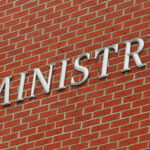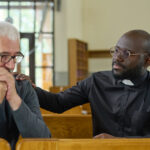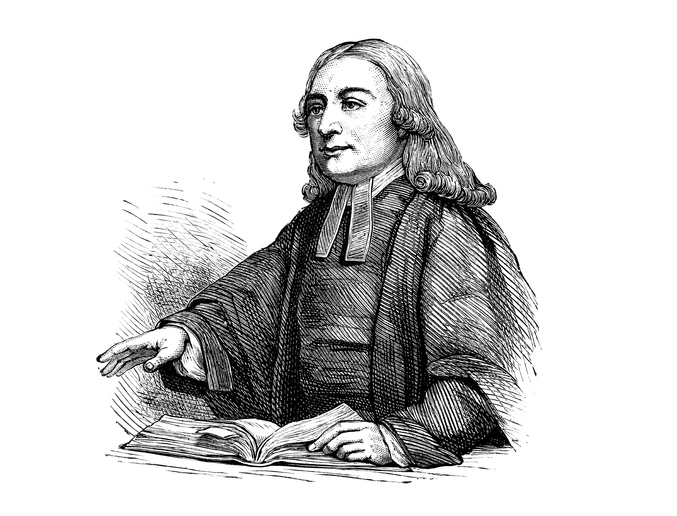
Like all Christians, Methodists believe that God sent his only son Jesus Christ to sacrifice Himself for the sins of humanity, and hold the Old and New Testaments of the Bible to be their holy book.
Methodism is one of the main branches of Protestantism. This means that in the 16th century it was part of the Reformation initiated by Martin Luther that broke away from the official church of the time (what we now refer to as the Roman Catholic branch of Christianity) because of diverging beliefs. These beliefs still distinguish Protestant branches from other Christian denominations today:
- Priests are not a special class of clergy; rather all members of a church are equals in the eyes of the Lord. Aside from Jesus Himself, church members do not need a special class of mediators between themselves and God.
- The Bible is the highest authority of God’s word; it has supremacy over other historic rituals like sacred traditions.
- Redemption from sin can be achieved through faith alone, as opposed to a combination of good deeds and faith.
- Salvation is granted by God and God alone through His divine grace and forgiveness; humans have no way of influencing God’s final decision about salvation.
- The Pope is not the head of the church and is not superior to other believers.
Methodism incorporates these basic elements of Protestantism and because of its history also shares much in common with Anglicanism, and even some aspects of Catholicism.
Explore a Christian Ministry Degree – Request More Info Today!
Methodism – A Religion Founded in Politics and Protest
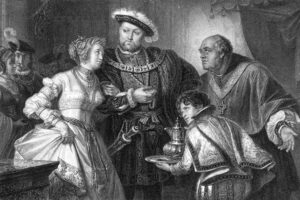 In 1517 Martin Luther posted his Ninety-five Theses on the church door in Wittenberg, and by 1521 he was excommunicated by the pope. The Reformation had been sparked and spread rapidly across Europe with profound religious and geo-political changes.
In 1517 Martin Luther posted his Ninety-five Theses on the church door in Wittenberg, and by 1521 he was excommunicated by the pope. The Reformation had been sparked and spread rapidly across Europe with profound religious and geo-political changes.
In England the Reformation initially took hold due more to politics than spirituality. Church taxes went directly to Rome rather than royal English coffers, and to add insult to injury the pope would not grant King Henry VIII of England an annulment so he could marry Anne Boleyn.
Invoking Protestant ideals for political ends Henry VIII created a new church, the Church of England, the predecessor of two major branches of Protestantism: Anglicanism (also known as Episcopalianism), and Methodism. Today the Church of England is considered to be the mother church of the Anglicans.
Anglicanism came first, and later on Methodists would break off from Anglicanism to form their own branch.
Methodism and Anglicanism – Fellow Travelers for Two Centuries
Because Anglicanism was more focused on political rather than religious differences, it, and by extension Methodism, still share some similarities with Catholicism:
- They celebrate the sacraments of baptism and mass with communion (Eucharist).
- They have their version of a rosary, known as prayer beads.
- They can choose to make the sign of the cross to bless themselves.
- They baptize members when they are still babies, though converts can be baptized as adults.
Even though Anglicans and Methodists ordain priests, they adhere to the Protestant ideal that priests are not superior to parishioners, and that no one church is superior to another; there is no central hierarchy. They also don’t pray to Mary or Saints; only to God and Jesus.
Historically, 16th-century Anglicism marched on for two centuries until the appearance of figures all Methodists will be familiar with: John Wesley, along with his brother Charles Wesley and his contemporary George Whitefield.
John Wesley and the Founding of Methodism in Europe
In 1703 John Wesley was born in Epworth, England as the 15th child of his father and mother. He would go on to found and lead the revivalist Methodist movement, beginning his pastoral career as an ordained Anglican minister in 1726.
Yearning for more than what was offered by the Church of England, in 1729 the Wesley brothers founded what others would derisively call the Holy Club, at the University of Oxford. Here the Wesley brothers focused on reading classical literature several nights of the week, as well as a divinity book every Sunday.
The mission of this small group was to adhere to the will of God and serve Him diligently every hour of the day. Detractors labeled this a severe form of “methodism,” and the name stuck. John Wesley embraced this, pledging that Methodists were those who lived according to the strict method laid out in the Bible.
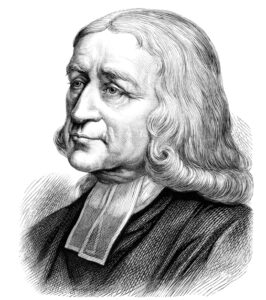 Part of John Wesley’s methodical devotion to the Word of God included abstention from amusements and a materialist lifestyle, as well as fasting and helping the needy, including notably prisoners. Wesley took his beliefs wherever he went, including to the American colony of Georgia, then under British rule.
Part of John Wesley’s methodical devotion to the Word of God included abstention from amusements and a materialist lifestyle, as well as fasting and helping the needy, including notably prisoners. Wesley took his beliefs wherever he went, including to the American colony of Georgia, then under British rule.
After a disheartening trip to win converts among the Native Americans of Georgia John Wesley returned to England, and it was at this point that he experienced an evangelical conversion. John Wesley, his brother, and George Whitefield began preaching what would become known as the Methodist faith, including its three important tenants:
- Because of humanity’s original sin, people are by their nature condemned to live in sin.
- Though people are inherently guilty of sin, because of their faith and faith alone, they are worthy of God’s redemption (as opposed to people being worthy of redemption because of their actions).
- Faith in God inspires inward and outward spiritual modesty.
George Whitefield was a fellow traveler with Methodists up until this point. Now, he would break with Methodists and branch off to be a part of yet another offshoot of Anglicanism: Calvinism.
Key differences between Whitefield and John Wesley were over the issue of predestination, with Wesley holding that God sanctions whatever may be, and pre-determines who will enjoy eternal salvation regardless of the person’s own actions.
Methodists, true to their name, also valued symbolic sacrifices to show their devotion to God and Jesus, such as fasting on Friday, abstaining from gambling and alcohol, and providing charity for the underprivileged. This is true up through the present day.
Today the major Methodist branches in the United States include:
- United Methodist Church (UMC) with 12.7 million members and over 32,000 congregations
- African Methodist Episcopal (AME) Church with up to 3.5 million members and approximately 7,000 congregations
- Free Methodist Church (FMC) with approximately 68,356 members and 856 congregations in the US
- Evangelical Methodist Church (EMC) with around 7,300 members and 80 churches in the US
- Congregational Methodist Church with up to 14,738 members and 187 churches in North America
Methodism Makes its Way to America in the 18th Century and Finds Converts in the Forgotten Members of Society
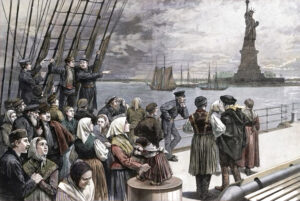 Just as politics had superseded spiritual matters during the early foundation of the Church of England, Methodism would experience an invigoration early on in its founding in relation to the American colonies.
Just as politics had superseded spiritual matters during the early foundation of the Church of England, Methodism would experience an invigoration early on in its founding in relation to the American colonies.
Battles between the British and American colonists broke out in 1775, marking the beginning of the Revolutionary War. As a recent British colony at the time, America was strongly influenced by the Church of England. As the war drew on, America experienced a shortage of priests. Wesley responded by ordaining his own priests with the authority to provide sacramental rites to their congregants.
This was a bridge too far for the Church of England, and cemented the split between Anglicans and Methodists.
The experience of John Wesley and the founding of Methodism evoked a sense of the societal underdog experience. The church found converts in England among prisoners who had been abandoned by the prevailing Church of England. Soon the underprivileged in America, starting with women and later slaves, also began to adopt the ideals of Methodism.



